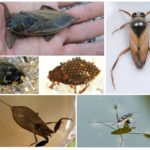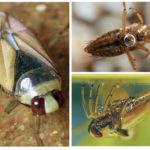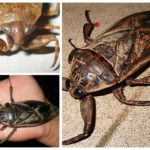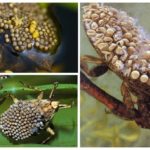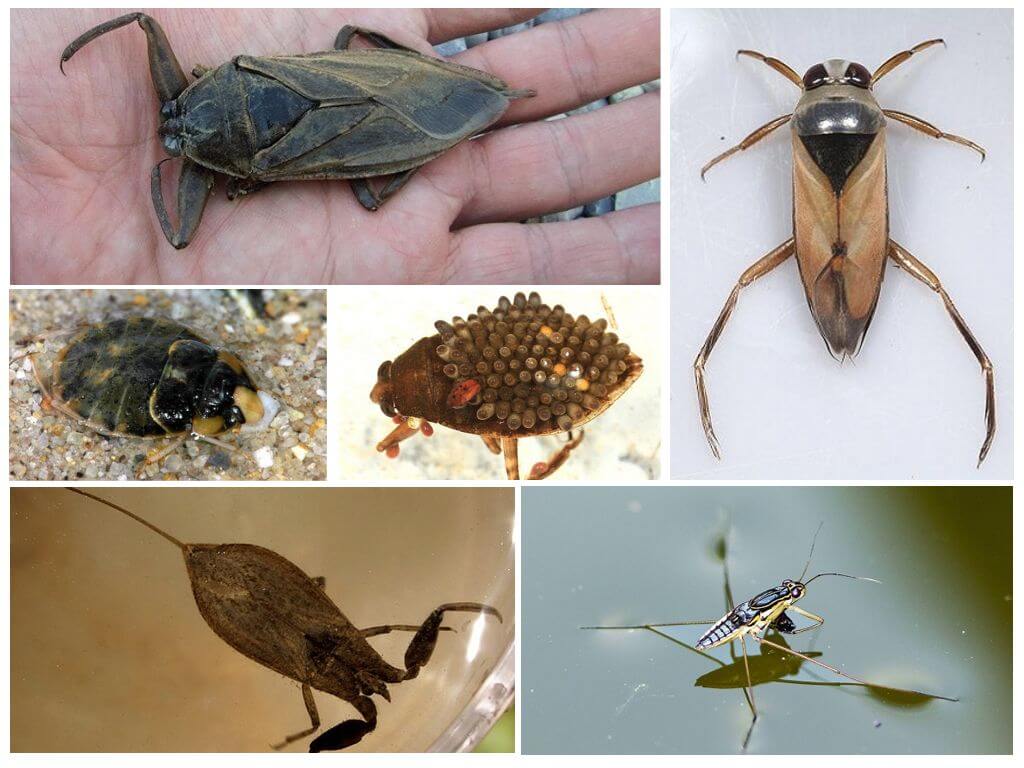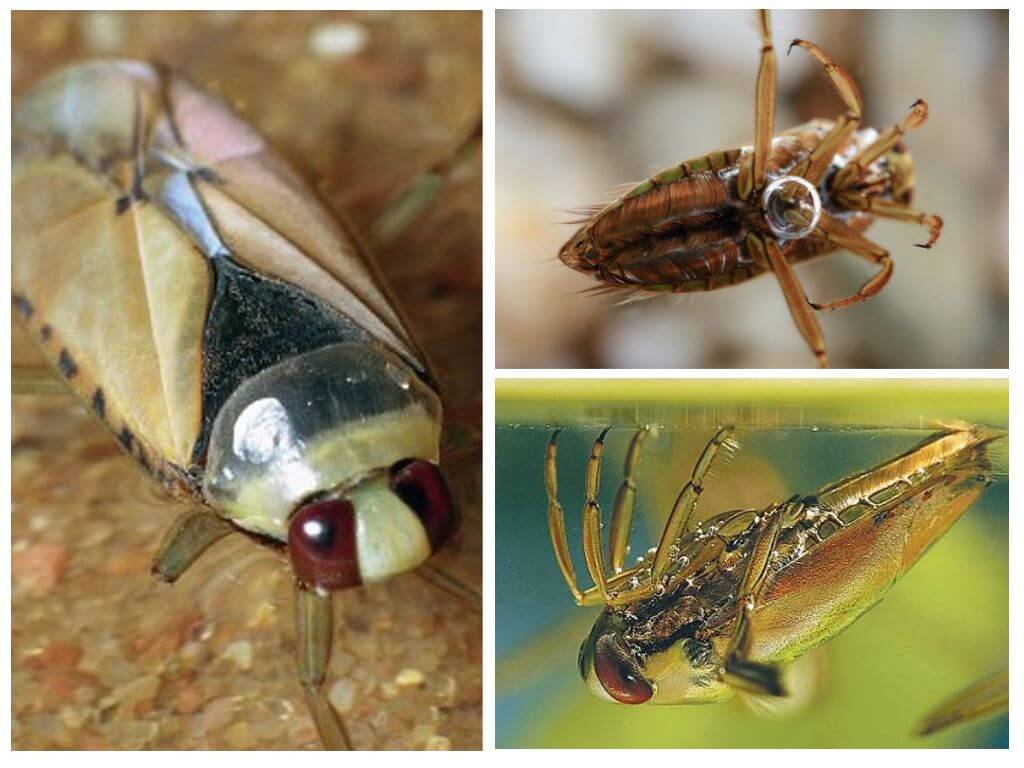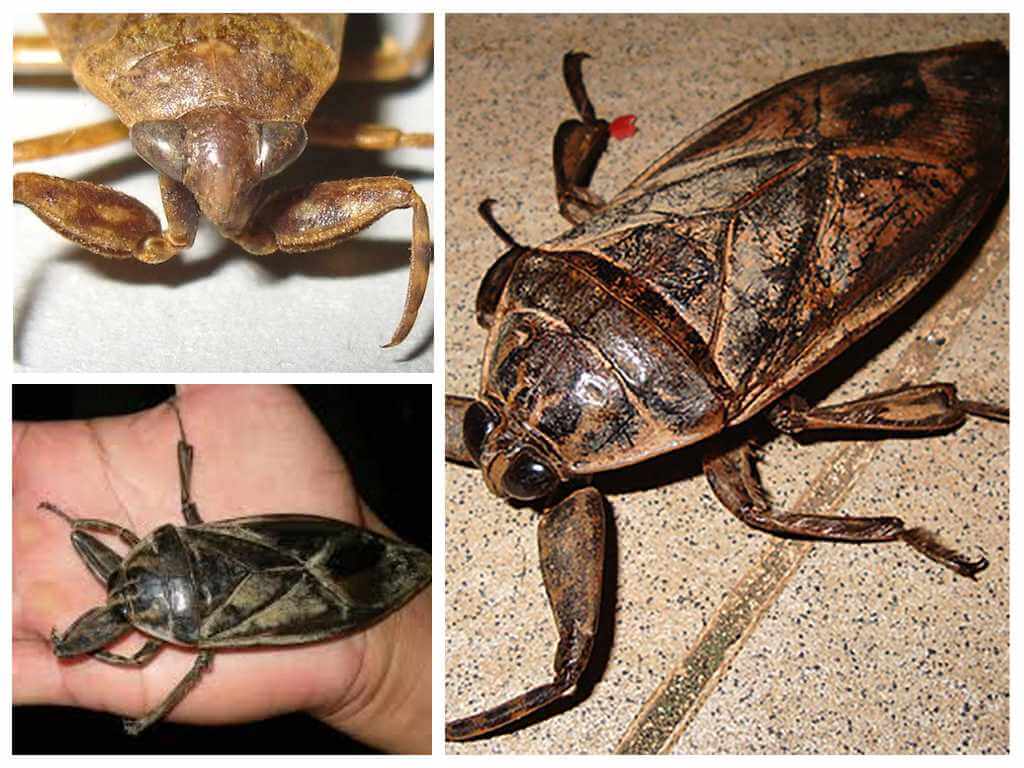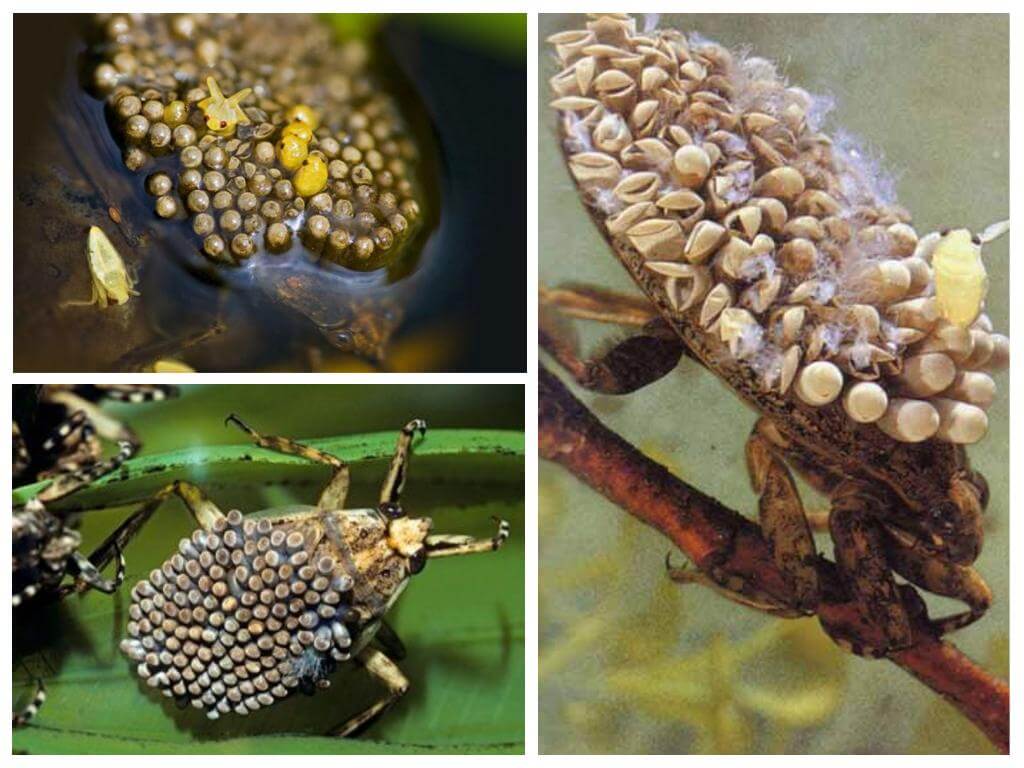Giant water bugs
- Water bugs
- Smooth
- Belostoma
- Belostoma eggs
It is very difficult to calculate how many species of bedbugs exist in nature. Bed bugsthat make human life unbearable, soldier bugsliving quietly in all parks and forests, pest fields - bug bug. But few people know that there are water bugs or gadashes, including giant species. Gladysh is a member of the insect family Hydrocores.
Because species of bedbugs many, they all differ in their external data, duration and lifestyle, nutrition, size, sometimes there are truly unique instances.The bug bedded not only moves fast along the water surface, but also flies perfectly. Such mobility is surprising, given its impressive size.
What are the types of water bugs
The water bug, unlike the bed, is completely harmless to humans. But if it is disturbed, as any insect will defend - bite. Lives in freshwaters, rivers and lakes. The main menu consists of larvae, small insects. Large individuals of water bugs can eat small fish, frogs, and sometimes attack turtles. The insect uses wings on its back very rarely, only for the purpose of finding a new habitat and food.
These types of water bugs are distinguished:
- Waterman. Found absolutely in all waters, lakes and even in puddles. Quickly moves on the surface of the water. A thin little body resembles a stick, has three pairs of legs.
- Grebylyak. A body no longer than 15 millimeters. Males with the help of bumps on their paws are capable of making sounds to attract females. Sometimes they can be frightened, because they fly out of the water. Rowing is active not only in summer but also in winter.
- Smooth. The size of the insect does not exceed 15 mm, it is distinguished by a flat belly, which is darker than the wings. If you touch it with your hand - it can sting, so it was called water wasp.
- Belostoma - the biggest bug. Reaches 10-17 cm in length.
Two types deserve special attention: smooth and belostoma. These are giant water bugs that are unique, but less well known than the ordinary water strider.
Bed bug Gladysh or water wasp
The main feature of the bed bug is a way of its movement on water. Pushing with his hind legs, he strokes the surface of the lake, quickly overcoming great distances. A favorable habitat is standing water, a pond or a lake. Sometimes it can be seen not only on the reservoir, but also near the house, because he is attracted by the night lights. On the back are two pairs of transparent wings and elytra. The insect is lifted into the air by hunger, when food is running out in the next pond.
On a note!
The bite is quite painful, but does not pose a health hazard.
Gladysh is an excellent hunter and master of disguise. Plunging into the water, he swims belly up, making it possible to control a large area of the reservoir. The back of an insect in water makes it inconspicuous to fish.Having caught the prey, Gladys sprinkles it with a special enzyme, then pierces and sucks the internal contents.
Rubbing feet with proboscis, makes sounds that resemble the chorus of a grasshopper. Water bugs do not harm the man to harm a person, they can sting - only when they are taken in their hands.
Giant bug - belostoma
The number of giant water bugs on the planet is quite small. They live in Southeast Asia and South Africa. The water bug on the photo looks frightening, because its size reaches 17 centimeters in length.
Belostoma description:
- large forelegs resembling a claw of cancer;
- eyes are mesh and large;
- the body is oblong, color from brown to black;
- long antennae.
Due to the impressive size and structure of the front paws, the belostoma hunts frogs, turtles and fish. The water giant is a predator that can wait its prey for a long time. Attacks quickly, pre-looking for a vulnerable spot on the body of the prey. It penetrates the skin with its proboscis and injects a special secret that dissolves the insides, and after a while the resulting clot is sucked out of the body.
Interesting!
If an ordinary person, seeing a giant bug, falls into panic because of its size, then in Thailand the belostoma is a delicacy and is massively destroyed.
When danger threatens the life of a belostoma, it pretends to be dead and numb. Sometimes it releases from the gland, which is located on the abdomen, a pungent smell that frightens the enemy.
Considering the photos of the inhabitants of reservoirs, the question involuntarily begs where the ears are at the water bug. In belostoma they are located in the middle segment of the body and are called the tympanic organ. There are organs of hearing on both sides of the body. The hearing aid has a rounded shape, which is covered with a stretched film that acts as a drum and protects against water penetration into the body. Inside it are attached air sacs, thanks to which all sounds are amplified. They are joined by nerve endings, which perceive vibrations of the membrane.
After belostoma wakes up from hibernation, it begins to actively feed, replenishing the spent reserves of nutrients. Then comes the period of mating, laying eggs and caring for the offspring. In one egg-laying there are one hundred eggs. The female lays the eggs on the back of the male.
Carrying offspring lasts two weeks. During this time, the male is constantly on the surface of the reservoir, because the future generation needs oxygen. During this period, the male eats less and becomes easy prey for predators. Therefore, by the end of the maturation of the larvae, the number of bugs is sharply reduced.
The larvae, leaving the eggs, have soft bodies and are devoid of coloring. Over time, the cover hardens and acquires the desired shade. Then the phase of active nutrition begins, they eat, grow and shed chitinous shell, which quickly becomes small for them.
For a person, a giant bug does not pose a danger, it can only scratch with a foot when it is swimming in the water. The enzyme caught on the skin will cause discomfort, and the trail left by the insect will heal for a long time.
The role of the giant water bug is hard to overestimate. Being a predator, it helps regulate the numbers of amphibians and insects on the planet. In Japan, a high mortality rate of three-keel turtles, which destroyed rice crops, was noted. During the observations, scientists found that the cause of their death was precisely belostomy.But giant bugs also caused damage to fisheries, eating young, running into the lake.
The line between the benefits and harm of the presence of water giants on the planet is very thin. Do not forget that in nature everything is interconnected, starting from microorganisms and ending with huge animals. Nature is unique - it must be appreciated and protected.

